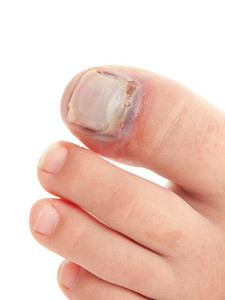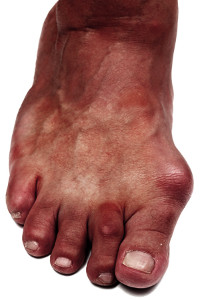Items filtered by date: May 2018
What is Soft Running?
 Running is a great way to stay in shape, and you can try to limit the amount of injuries you endure by running “softer”. A recent study looked at “320 novice runners and measured their landing force at two paces – a slower 12-minute-per-mile pace and a quicker 8-minute-per-mile pace”. Those leading the study had half of the participants learn to run “softer” while others made no changes in their styles of running. According to the study, “After 12 months, researchers found that the runners who learned to run ‘softer’ had 62 percent less injuries than the runners who made no changes.” If you are a runner and you want to fix your stride to reduce your chance of injury, you should try counting your foot strikes per minute. Another tip is to inspect your shoes to find the areas that are worn out. The worn out areas will tell you where your feet are landing when you run. If you have shin pain or heel pain, this may suggest that you are either over striding or using the wrong muscles.
Running is a great way to stay in shape, and you can try to limit the amount of injuries you endure by running “softer”. A recent study looked at “320 novice runners and measured their landing force at two paces – a slower 12-minute-per-mile pace and a quicker 8-minute-per-mile pace”. Those leading the study had half of the participants learn to run “softer” while others made no changes in their styles of running. According to the study, “After 12 months, researchers found that the runners who learned to run ‘softer’ had 62 percent less injuries than the runners who made no changes.” If you are a runner and you want to fix your stride to reduce your chance of injury, you should try counting your foot strikes per minute. Another tip is to inspect your shoes to find the areas that are worn out. The worn out areas will tell you where your feet are landing when you run. If you have shin pain or heel pain, this may suggest that you are either over striding or using the wrong muscles.
All runners should take extra precaution when trying to avoid injury. If you have any concerns about your feet, contact Dr. Mark Gagnon of Advanced Podiatry. Our doctor will treat your foot and ankle needs.
How to Prevent Running Injuries
There are a lot of mistakes a runner can make prior to a workout that can induce injury. A lot of athletes tend to overstretch before running, instead of saving those workouts for a post-run routine. Deep lunges and hand-to-toe hamstring pulls should be performed after a workout instead of during a warmup. Another common mistake is jumping into an intense routine before your body is physically prepared for it. You should try to ease your way into long-distance running instead of forcing yourself to rush into it.
More Tips for Preventing Injury
- Incorporate Strength Training into Workouts - This will help improve the body’s overall athleticism
- Improve and Maintain Your Flexibility – Stretching everyday will help improve overall performance
- “Warm Up” Before Running and “Cool Down” Afterward – A warm up of 5-10 minutes helps get rid of lactic acid in the muscles and prevents delayed muscle soreness
- Cross-Training is Crucial
- Wear Proper Running Shoes
- Have a Formal Gait Analysis – Poor biomechanics can easily cause injury
If you have any questions, please feel free to contact one of our offices located in Crestwood, Orland Park, and Summit, IL . We offer the newest diagnostic and treatment technologies for all your foot care needs.
Have I Broken My Toe?
 If you have ever experienced a broken toe, you may be familiar with the pain and inconvenience that’s often associated with this condition. The toes are an important element in maintaining the body’s balance and it’s suggested to seek treatment as soon as possible. There are several ways your toes can fracture. These may include dropping a heavy object on the foot, falling, or another condition such as arthritis or gout which can weaken the bones in the toes. There are obvious symptoms that accompany a broken toe, including bruising and swelling, in addition to pain that does not subside. To properly diagnose this condition, an X-ray is generally performed and the correct treatment is determined by the severity of the break. If the bone is protruding through the skin, surgery may be necessary to ensure proper healing by placing the bone back into place. Please speak to a podiatrist if you have concerns and would like additional information about broken toes.
If you have ever experienced a broken toe, you may be familiar with the pain and inconvenience that’s often associated with this condition. The toes are an important element in maintaining the body’s balance and it’s suggested to seek treatment as soon as possible. There are several ways your toes can fracture. These may include dropping a heavy object on the foot, falling, or another condition such as arthritis or gout which can weaken the bones in the toes. There are obvious symptoms that accompany a broken toe, including bruising and swelling, in addition to pain that does not subside. To properly diagnose this condition, an X-ray is generally performed and the correct treatment is determined by the severity of the break. If the bone is protruding through the skin, surgery may be necessary to ensure proper healing by placing the bone back into place. Please speak to a podiatrist if you have concerns and would like additional information about broken toes.
A broken toe can be very painful and lead to complications if not properly fixed. If you have any concerns about your feet, contact Dr. Mark Gagnon from Advanced Podiatry. Our doctor will treat your foot and ankle needs.
What to Know About a Broken Toe
Although most people try to avoid foot trauma such as banging, stubbing, or dropping heavy objects on their feet, the unfortunate fact is that it is a common occurrence. Given the fact that toes are positioned in front of the feet, they typically sustain the brunt of such trauma. When trauma occurs to a toe, the result can be a painful break (fracture).
Symptoms of a Broken Toe
- Throbbing pain
- Swelling
- Bruising on the skin and toenail
- The inability to move the toe
- Toe appears crooked or disfigured
- Tingling or numbness in the toe
Generally, it is best to stay off of the injured toe with the affected foot elevated.
Severe toe fractures may be treated with a splint, cast, and in some cases, minor surgery. Due to its position and the pressure it endures with daily activity, future complications can occur if the big toe is not properly treated.
If you have any questions please feel free to contact one of our offices located in Crestwood, Orland Park, and Summit, IL . We offer the newest diagnostic and treatment technologies for all your foot and ankle needs.
Why Do Bunions Develop?
A bunion is an abnormal growth that forms on the bottom of the big toe. Typical symptoms include swelling, pain, and redness surrounding the area of the big toe, and the entire foot may change shape as a result of the bunion. Choosing to wear poorly fitting shoes may cause this condition to develop, in addition to having a family history of bunions. This ailment may be prevented by wearing shoes that have adequate room for the toes to move freely, and shoes with a lower heel are preferred. If you enjoy running or jogging, your feet should be properly supported in running shoes that fit correctly. It’s suggested to schedule a consultation with a podiatrist who is skilled in properly diagnosing this condition. Treatment options can be discussed, which may include custom-made orthotics for temporary relief or surgery for removal of the bunion.
If you are suffering from bunion pain, contact Dr. Mark Gagnon of Advanced Podiatry. Our doctor can provide the care you need to keep you pain-free and on your feet.
What Is a Bunion?
Bunions are painful bony bumps that usually develop on the inside of the foot at the joint of the big toe. As the deformity increases over time, it may become painful to walk and wear shoes. Women are more likely to exacerbate existing bunions since they often wear tight, narrow shoes that shift their toes together. Bunion pain can be relieved by wearing wider shoes with enough room for the toes.
Causes
- Genetics – some people inherit feet that are more prone to bunion development
- Inflammatory Conditions - rheumatoid arthritis and polio may cause bunion development
Symptoms
- Redness and inflammation
- Pain and tenderness
- Callus or corns on the bump
- Restricted motion in the big toe
In order to diagnose your bunion, your podiatrist may ask about your medical history, symptoms, and general health. Your doctor might also order an x-ray to take a closer look at your feet. Nonsurgical treatment options include orthotics, padding, icing, changes in footwear, and medication. If nonsurgical treatments don’t alleviate your bunion pain, surgery may be necessary.
If you have any questions, please feel free to contact one of our offices located in Crestwood, Orland Park, and Summit, IL . We offer the newest diagnostic and treatment technologies for all your foot care needs.
Symptoms of Stress Fractures
 If you are experiencing a dull achy feeling in your feet, you may have what is referred to as a stress fracture. It consists of small cracks in the bones of the feet, and is generally caused by a repetitive stress that’s inflicted on the foot. Causes of this type of fracture may include jogging frequently, adding additional intensity to the duration of the run, or extending the period of time the running activity is pursued. There are several symptoms that may be apparent, including weakness in the foot, and pain that won't cease and eventually worsens, specifically at night. It may be possible to prevent stress fractures from occurring by choosing to wear proper footwear, maintaining a proper nutritional lifestyle, and gradually increasing the intensity of running. After a diagnosis is performed, proper treatment may begin, which may include wearing a cast or undergoing surgery for severe stress fractures. Please consult with a podiatrist to learn more about stress fractures of the foot or ankle.
If you are experiencing a dull achy feeling in your feet, you may have what is referred to as a stress fracture. It consists of small cracks in the bones of the feet, and is generally caused by a repetitive stress that’s inflicted on the foot. Causes of this type of fracture may include jogging frequently, adding additional intensity to the duration of the run, or extending the period of time the running activity is pursued. There are several symptoms that may be apparent, including weakness in the foot, and pain that won't cease and eventually worsens, specifically at night. It may be possible to prevent stress fractures from occurring by choosing to wear proper footwear, maintaining a proper nutritional lifestyle, and gradually increasing the intensity of running. After a diagnosis is performed, proper treatment may begin, which may include wearing a cast or undergoing surgery for severe stress fractures. Please consult with a podiatrist to learn more about stress fractures of the foot or ankle.
Stress fractures occur when there is a tiny crack within a bone. To learn more, contact Dr. Mark Gagnon from Advanced Podiatry. Our doctor can provide the care you need to keep you pain free and on your feet.
How Are They Caused?
Stress fractures are the result of repetitive force being placed on the bone. Since the lower leg and feet often carry most of the body’s weight, stress fractures are likely to occur in these areas. If you rush into a new exercise, you are more likely to develop a stress fracture since you are starting too much, too soon. Pain resulting from stress fractures may go unnoticed at first, however it may start to worsen over time.
Risk Factors
- Gender – They are more commonly found in women compared to men.
- Foot Problems – People with unusual arches in their feet are more likely to develop stress fractures.
- Certain Sports – Dancers, gymnasts, tennis players, runners, and basketball players are more likely to develop stress fractures.
- Lack of Nutrients – A lack of vitamin D and calcium may weaken the bones and make you more prone to stress fractures
- Weak Bones – Osteoporosis can weaken the bones therefore resulting in stress fractures
Stress fractures do not always heal properly, so it is important that you seek help from a podiatrist if you suspect you may have one. Ignoring your stress fracture may cause it to worsen, and you may develop chronic pain as well as additional fractures.
If you have any questions, please feel free to contact one of our offices located in Crestwood, Orland Park, and Summit, IL . We offer the newest diagnostic and treatment technologies for all your foot care needs.

